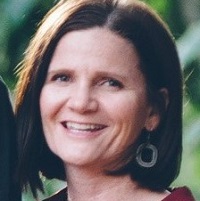As brands embrace new, more agile ways of getting their products to international markets, linear processes are being disrupted. Language quality assurance (LQA) is no different. To get it right, forward-thinking companies have begun to incorporate quality as a layer, instead of a step, in their globalization processes.
Below, we’ll explain what we mean by this “layer” of LQA—and why it’s absolutely critical to achieving global quality at scale.
The old way: linguistic quality as a step
In the past, localization processes were linear. Products and campaigns passed through linguistic quality checks on their way to release and publication. And to some extent, it worked—because the content being assessed and optimized followed a traditional, linear production process (which seems long by today’s standards). In that context, and at small scales, LQA could be treated as a step (or multiple steps) on a journey from source content to global delivery.
But that approach is fundamentally flawed, and when you add any kind of scale or complexity, it’s totally unsustainable. Here’s why.
The compound cost of errors
Say a (simplified) localization process has six steps. If an error occurs at step two, but you don’t find it until step five, which is your “quality step,” you’ve already wasted time and resources in the intervening steps. You have to go back and rework not just the step where the error took place, but all the others, too.
When that happens at any scale, you’re talking about huge waste, extra cost and lost productivity, not to mention the wider disruption one delay will have on other areas of your operation.
A better way: linguistic quality as a layer
When you treat linguistic QA as a layer—that is, as something not confined to one step, but instead as something built into every step across the whole process—you avoid that frustrating and unsustainable situation described above.
In this new model, every step is an opportunity to check and optimize quality levels, so errors have nowhere to hide.
Issues are identified and resolved at the source, so you avoid the domino effect an error can have throughout the localization process.
So, what does a linguistic quality layer look like in practice, and how can you apply it to your own program?
Composing better quality checks
At RWS Moravia, we bake LQA into every step of the localization process by adopting a “composable” approach to building solutions for quality. We’ve written more about the concept of composability and its application in
localization tech stacks here, but in simple terms it’s all about creating solutions LEGO-style, using building blocks.
For us, those building blocks might be strategies, processes, technologies or human resources, taken as modular, reusable elements combined in different ways to solve different quality challenges.
The components might be our own, or they might be best-in-class, third-party technologies that we connect to via APIs—which is why we’re such strong believers in the “API-ification” of localization tool stacks.
Imagine you’re localizing a software product for global release. If unexpected text creeps into the translated product’s source code, it can break the build completely. We’ve seen this happen—and we’ve seen it prevented through the use of automated LQA checks throughout the process. One client managed to reduce the number of bugs reported by 93% and saved even more by cutting the need for rework in intermediary steps like editing, proofing, testing and more.
The point is: a highly-composable stack gives you a huge edge in creative problem-solving. And quality is one of the problems we’re helping brands solve in new ways.
To brainstorm more ways you can start treating linguistic quality assurance as a layer, connect with us
here. We love to talk about this stuff.



